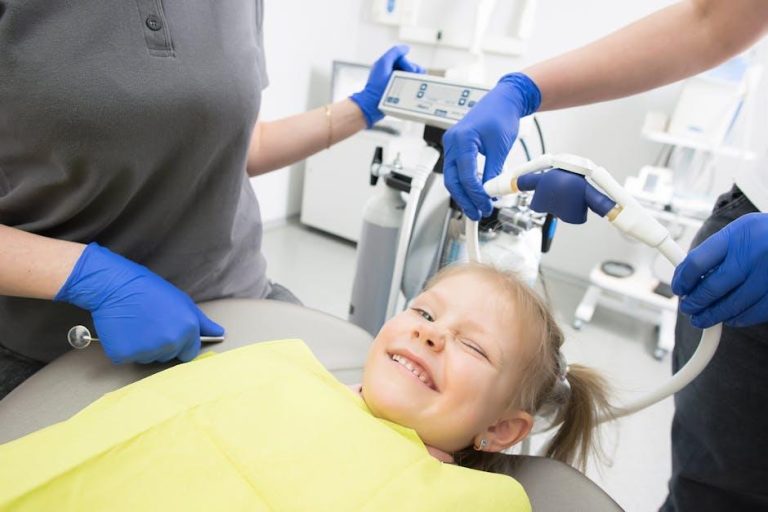1 in 3 Kids Has Dental Problems, Poll Finds – U.S. News & World Report
Recent findings reveal a concerning trend in pediatric oral health across the United States: approximately one in three children is currently facing dental problems. This alarming statistic, highlighted by a U.S. News & World Report poll, shines a spotlight on the growing need for awareness, preventive care, and accessible dental services for children nationwide.
Understanding the Scope of Kids’ Dental Problems in the U.S.
Dental problems among children range from mild issues like early-stage cavities to more serious conditions including infections and severe decay. According to the poll, the most common dental concerns reported by parents include:
- Tooth decay and cavities
- Gum inflammation or early signs of gingivitis
- Unexpected tooth pain or sensitivity
- Lack of regular dental checkups
These challenges are compounded by social and economic factors such as limited access to dental care in underserved communities, lack of dental insurance, and insufficient oral hygiene education.
Key Findings from the Poll
| Age Group | Percentage with Dental Problems | Most Common Issue |
|---|---|---|
| 2-5 years | 28% | Early Childhood Cavities |
| 6-12 years | 34% | Tooth Decay |
| 13-17 years | 32% | Gum Inflammation & Sensitivity |
Why Kids Are Prone to Dental Problems
Understanding why one in three kids faces dental issues requires looking at common causes and contributing factors, including:
- Poor Oral Hygiene Practices: Children may not brush or floss properly or regularly enough to prevent plaque buildup.
- Dietary Choices: Excessive consumption of sugary snacks and drinks contributes to tooth decay.
- Delayed Dental Visits: Skipping or postponing routine dental checkups allows problems to go unnoticed and worsen.
- Lack of Parental Awareness: In some families, knowledge about proper oral health care and problem indicators is limited.
- Socioeconomic Barriers: Dental insurance gaps and accessibility issues affect treatment and preventive care.
Benefits of Early Dental Care and Prevention
Early intervention and consistent oral care deliver significant benefits that can last a lifetime. Making dental health a priority for children can:
- Prevent cavities, gum disease, and painful infections
- Improve children’s self-confidence with a healthy smile
- Reduce costly and invasive dental treatments in the future
- Promote good overall health – dental issues can impact heart and metabolic health
- Build lifelong healthy habits extending into adulthood
Practical Tips for Parents to Protect Their Kids’ Dental Health
Parents and caregivers can take proactive steps to reduce the risk of dental problems and promote good oral hygiene habits.
Daily Care Routine
- Ensure children brush teeth twice daily with fluoride toothpaste
- Supervise brushing until children are capable of thorough cleaning on their own (usually around age 7-8)
- Encourage flossing daily once two teeth touch
- Limit sugary snacks and drinks; opt for water and healthy foods
Regular Dentist Visits
- Schedule professional dental checkups every six months
- Ask your dentist about sealants to protect molars from cavities
- Address dental issues early before they worsen
Educational Empowerment
- Teach kids the importance of dental hygiene in a fun, engaging way
- Use books, videos, or apps tailored to children for better learning
- Be a positive role model by practicing good oral care yourself
Case Study: Improving Dental Health in a Community
In a Midwest community plagued by high rates of childhood dental decay, local health organizations launched an outreach program focused on education, fluoride treatments, and providing transportation to dental clinics. Within two years:
- School dental screenings identified early problems for timely treatment
- Monthly workshops taught parents and children about brushing, diet, and dangers of sugary drinks
- Fluoride varnish applications cut new cavity occurrences by 40%
This community example highlights the power of coordinated efforts and education in combating childhood dental problems.
Conclusion
The revelation that 1 in 3 children in the U.S. suffers from dental problems calls for urgent attention from parents, educators, and health professionals. Prioritizing regular dental care, encouraging healthy habits, and overcoming socioeconomic barriers are keys to reversing this troubling trend. By working together and making informed choices, we can ensure brighter smiles and healthier futures for our children.
Would you like to learn more about children’s dental health? Subscribe to our newsletter for expert tips, updates on new research, and practical advice tailored for parents and caregivers.


